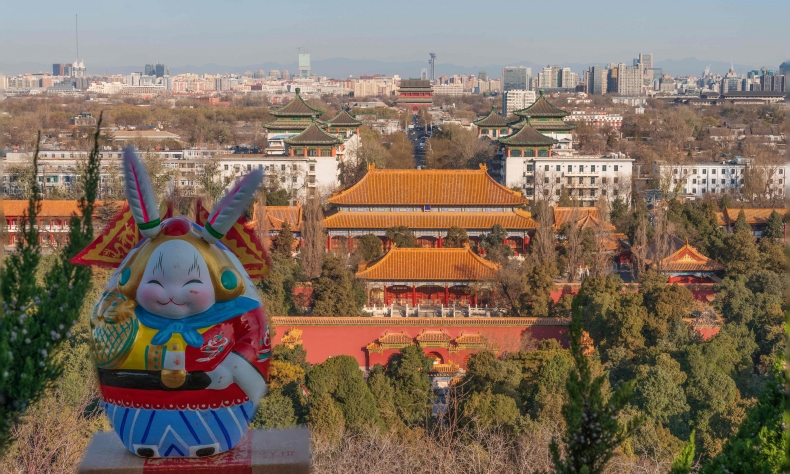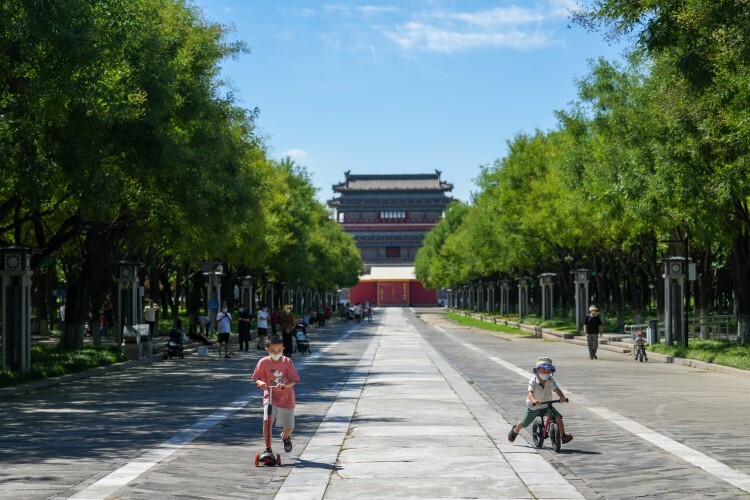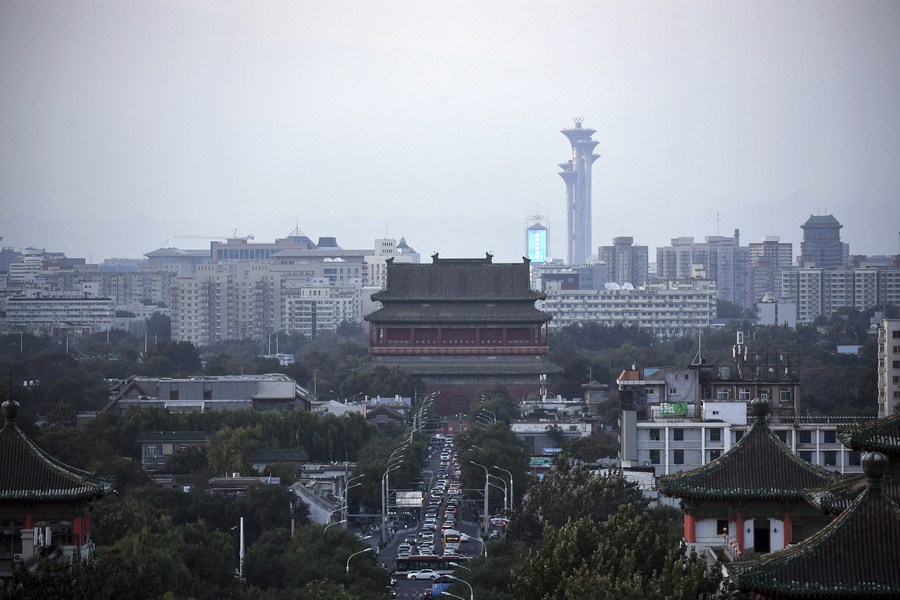A Lively Central Axis

The time-honored axis is now overflowing with new vitality while its intrinsic properties are well-preserved.
Cultural heritage has always been seen as a witness of history and the crystallization of culture. Traditionally, the best way to preserve cultural heritage is to curate cultural artifacts and relics and display them through technology or physically so that people can view them, admire the wisdom of their ancestors, and feel the significance of history and the splendor of art. Although this approach is still the way people learn history and appreciate ancient art, it does not meet the requirements of the contemporary cultural experience – nor does it meet modern expectations of cultural heritage contributing to the development of modern society. People expect that cultural heritage can not only be integrated into but also come alive in modern life – improving today’s quality of life and leading to sustainable social development.
People-centered protection
“The Central Axis of Beijing” is a project that Beijing is preparing to apply for acknowledgement as a World Heritage Site. It is a large group of buildings in the heart of the capital’s old city stretching 7.8 kilometers from north to south covering a span of over 600 hectares – encompassing an array of sites including monumental buildings, ancient royal buildings, temples, administration facilities, iconic 20th-century public buildings – as well as traditional commercial streets and bridges. The Central Axis reflects the traditional Chinese manner of ordering and layout of capitals as well as the relationship between heaven and human underlying them – fusing traditional philosophy, aesthetic sense, and urban design ideas.
Such a monumental and sizable heritage in the center of the city is not only an important historical legacy but also a host to modern social life in Beijing. Since 2017, Beijing municipal government has been working on the preservation of the Central Axis, which has subsequently drawn the attention of local communities and residents to Beijing’s history and culture, engaged the public in the interpretation of heritage values and the inheritance of relevant intangible cultural heritage – and involved more people in the discussion of heritage preservation methods. The Axis has thus captivated residents of Beijing.

In the late 1980s, the then Director-General of UNESCO, Federico Mayor, referred to the “cultural dimension of development” in the context of the A World Decade for Cultural Development, and today people have a clearer knowledge of the significance of this cultural dimension for social development. In its Medium-Term Strategy 2014-2021, UNESCO emphasized the role and significance of heritage in “promoting social stability, peace-building, recovery from crisis situations, and development strategies.” The World Heritage Committee included community in its global strategy for World Heritage in 2007 and deems that the importance of community engagement lies not only in heritage conservation but also in achieving the fundamental goals of the United Nations Millennium Declaration – ending extreme poverty and promoting sustainable development. This understanding has been highlighted in the efforts of identifying, protecting, and managing World Heritage properties.
Today, the “people-centered approach” has been widely recognized as an essential legacy protection method, with the community-based heritage conservation aspect being the focus of attention. In China, a guideline for the conservation of cultural heritage sites revised in 2015 emphasized the cultural and social value of cultural heritage sites, the importance of community engagement, and the essence of the preservation of heritage sites as an inheritance of cultural traditions. These concepts are all reflected in the Central Axis of Beijing conservation effort.
Engaging the youth
An important aspect of heritage conservation is to engage young people by communicating the value of heritage, thus transforming its historical and cultural connotations into cultural creativity in contemporary lives. Therefore, the Central Axis of Beijing is being incorporated into the curriculum and extracurricular activities of Beijing’s primary and secondary schools, especially those in the periphery of the axis.
For example, Beijing Yucai School has incorporated some of the traditional Chinese agricultural ideas presented by the Altar of the God of Agriculture into its curriculum; students at Dengshikou Elementary School and Haidian Foreign Language Academy depicted the Central Axis through paintings and essays; and those at Heizhima Hutong Elementary School have made short videos to introduce it. Through these activities, students of all ages have shown an intense interest and pride in the historical sites located along the axis that is close to their lives.
As an iconic property for the city, the Central Axis has drawn great attention from the media. The variety shows on Beijing’s Central Axis are popular among viewers – especially young audiences – and have received high live viewership. Exhibitions on the Central Axis on varied angles were launched by many social institutions, leading to enormous interest and numbers of visitors. In 2021, Beijing organized a creation competition on the Central Axis, in which nearly 35,000 entries were collected in three months. Before the 2022 Beijing Winter Olympic Games, the organizing committee produced the 2022 Winter Games countdown commemorative badges with the theme of the axis, which turned out to be a hit in the market.

Continuation of conventional functions
The preservation and continuation of traditional functions is one of the priorities of the Beijing Central Axis conservation initiative. The axis legacy embodies one of the traditional Chinese capital planning concepts – “imperial court in the front and market district in the back.” Di’anmen Street constitutes the main body of the “back market district,” which has maintained its thriving commercial activity since the 13th century. In the process of preserving and improving the environment of this area, input of the business owners was taken into consideration, so that the commercial function of this area can continue with an improved business environment and better-preserved legacies.
Raising pigeons is a traditional hobby for Beijingers. The Central Axis lies in the core area of Beijing’s old city, where many native residents maintain the tradition of rearing pigeons. But the large number of pigeon houses has caused both environmental pollution and damage to the streetscape. To improve the urban landscape, designers helped remodel pigeon houses following consultations with the pet owners, which has not only maintained the traditional Beijing lifestyle but effectively improved the neighborhood’s environment.
The social outreach and participation during the period of the application of the Beijing Central Axis as a World Heritage Site has resulted in significant spillover effects. The axis as a World Heritage Site candidate has drawn much attention in the mega-city of Beijing and has subsequently piqued the interest of many citizens. The engagement of residents and business owners in heritage conservation and environmental improvement, the public attention to traditional cultural elements, and the related cultural and creative activities have all given the city a sustainable development impetus.
The historical and cultural legacy embedded in the Beijing Central Axis and the capital’s lively contemporary life together tell the fascinating story of this incredible city.
Lü Zhou is director of National Heritage Center, Tsinghua University.
 Facebook
Facebook
 Twitter
Twitter
 Linkedin
Linkedin
 Google +
Google +










